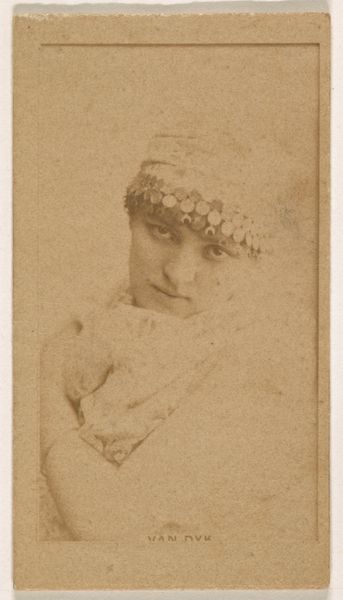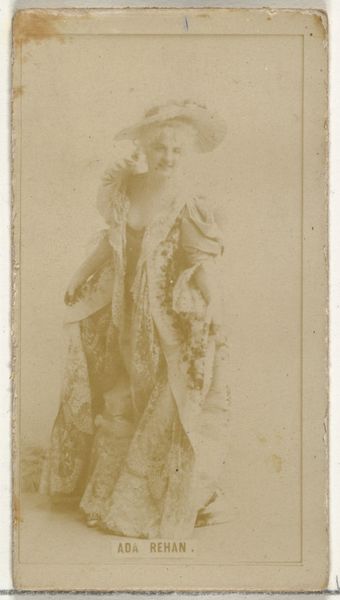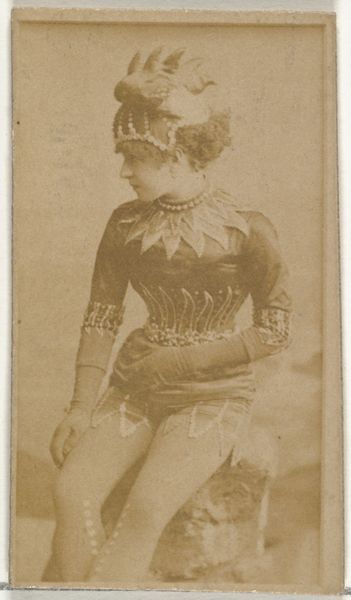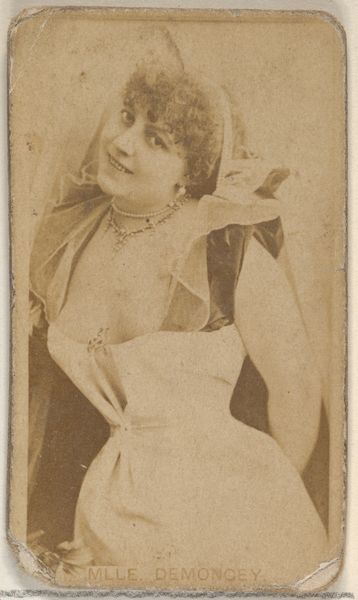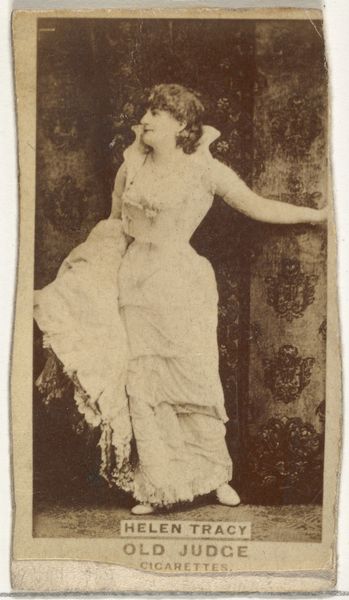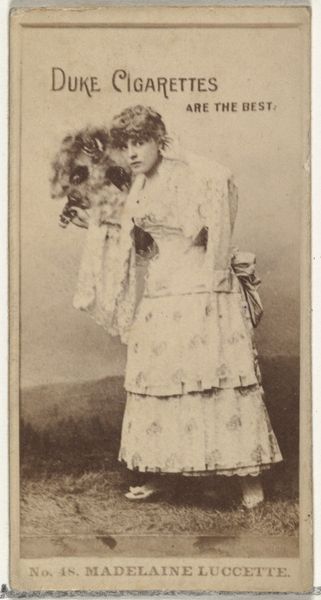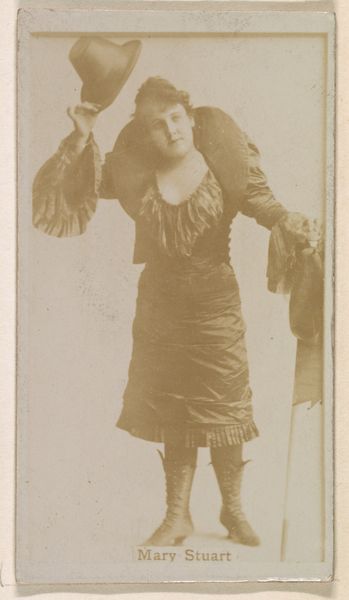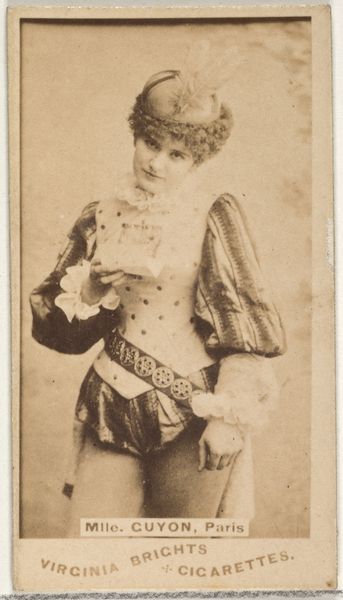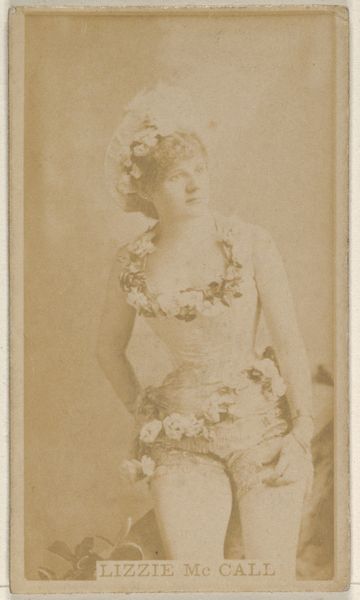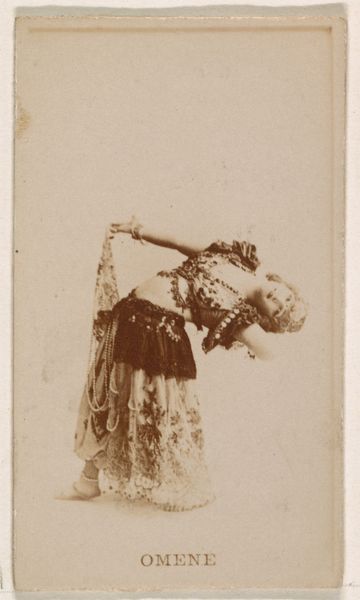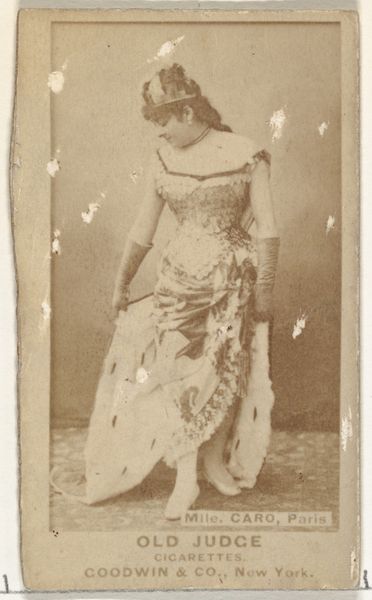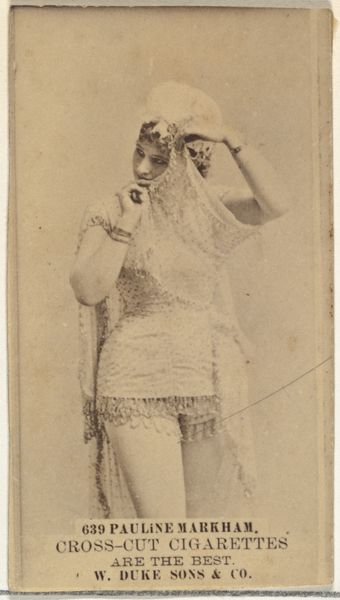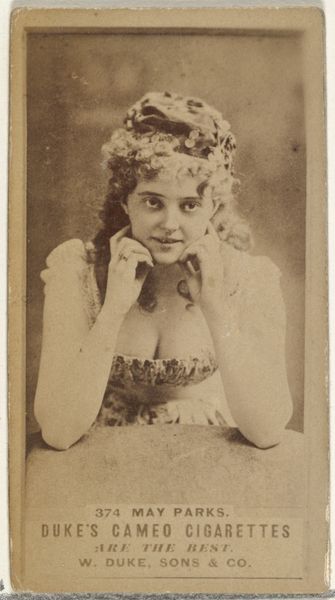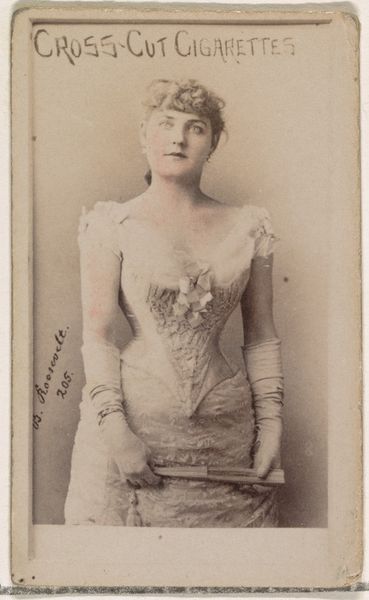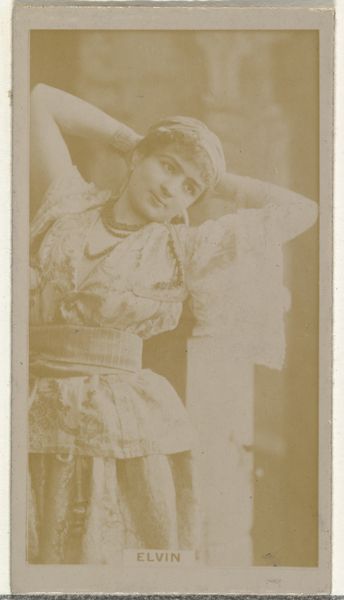
Omene, from the Actresses series (N245) issued by Kinney Brothers to promote Sweet Caporal Cigarettes 1890
0:00
0:00
drawing, print, photography
#
portrait
#
drawing
# print
#
charcoal drawing
#
figuration
#
photography
#
orientalism
Dimensions: Sheet: 2 1/2 × 1 7/16 in. (6.4 × 3.7 cm)
Copyright: Public Domain
Curator: This delicate albumen print, titled "Omene," comes to us from Kinney Brothers Tobacco Company, dating back to 1890. It's one of a series of actress portraits they issued. What's your first impression? Editor: Immediately, the veil draws me in. It's adorned with these reflective trinkets that catch the light in a mesmerizing way, softening and blurring the sitter's features. The photograph has a captivating mystique. Curator: Yes, it's striking how that ornamentation both obscures and enhances the actress's face. These cards were essentially miniature advertisements, produced on a mass scale to be included in Sweet Caporal cigarette packs. It challenges the traditional high art paradigm when tobacco companies engage with and distribute art like this. Editor: Right, it also reflects a common orientalist theme prevalent in the era, and a deliberate choice to imbue their product with a sense of exoticism. Notice how "Omene," very possibly not her given name, is printed below, and how the pose evokes imagery of Middle Eastern or North African dancers or performers, designed to lure consumers. Curator: The production of these cards speaks to the rise of consumer culture and advertising techniques during the late 19th century, focusing less on artistry than pure distribution. We should also mention that albumen paper allowed for mass production and sharp detail at the time, making these collectible cards cheap to manufacture. Editor: Beyond the commercial strategy, there's the lasting visual impact and association the image carries forward. I think the use of a veiled figure speaks volumes about Victorian-era desires for the hidden, the mysterious, and how femininity was commodified as exotic. What are we left to think of the labor and craft invested in its manufacturing as we see that image recirculated through the era, into the present, carrying those complex ideas around femininity? Curator: That's such an astute observation. The material reality intersects with the layered meanings. Seeing these cards now gives us such insight into production processes and commercial motivations alongside social fascinations of the period. Editor: Ultimately, even these smaller prints served a dual role – tools of consumption and reflection. Curator: Precisely! And through examining the layers of manufacturing, we better comprehend a history now bound to those tangible remains.
Comments
No comments
Be the first to comment and join the conversation on the ultimate creative platform.
